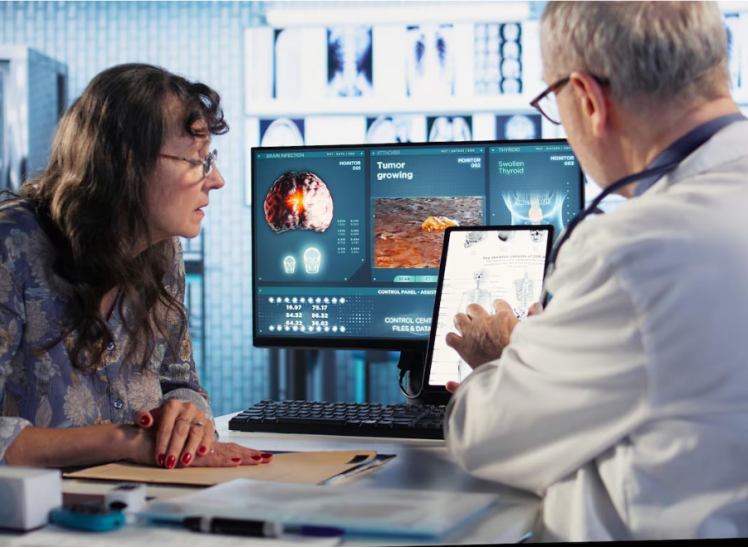Healthcare is changing quickly, and new technologies have made it possible to give better care, especially when it comes to monitoring patients and providing virtual care services. Real-time patient monitoring and virtual care services are becoming essential aspects of modern healthcare systems. They give both doctors and patients new ways to monitor, manage, and improve health outcomes from a distance. Patients can get care at home with this technology, and healthcare practitioners can make sure they give accurate, timely care.
The Future of Healthcare: Real-Time Patient Monitoring
Real-time patient monitoring is the use of advanced technology like wearable devices, sensors, and mobile apps to keep an eye on a patient’s vital signs and health state all the time. This monitoring system gives healthcare workers real-time information on the patient’s health so that they can find out about any changes right away. Patients with chronic illnesses like diabetes, heart disease, or breathing problems need this kind of monitoring because quick action can stop problems from getting worse.
Real-time patient monitoring helps find problems before they get worse by keeping an eye on the patient’s vital indicators, such as heart rate, blood pressure, and oxygen levels. This lets doctors act quickly. This leads to better outcomes for patients, fewer hospital readmissions, and better long-term care. This kind of monitoring gives patients peace of mind since they know that healthcare experts are always keeping an eye on their health, even from a distance.
The Role of the Patient Modern healthcare uses virtual care services.
Patient Virtual Care Services for patients are changing how healthcare is given. Patients can get consultations, diagnosis, and follow-up care from home using virtual care, which includes telemedicine and digital health platforms. Patients don’t have to go to healthcare facilities for non-emergency difficulties with this type of care. This saves time and money for both patients and healthcare providers.
Healthcare providers can talk to patients over the phone, through video conversations, or even through messaging platforms. This makes it easier and more flexible for them to connect with patients. This method is especially helpful for people who live in rural or underserved areas where it may be hard to get to a doctor’s office. With virtual care services for patients, those who live far away can still get competent medical advice without having to travel far.
Combining virtual care with real-time monitoring
One of the best things about real-time patient monitoring is that it works perfectly with virtual care services for patients. Real-time monitoring, when used with virtual consultations, lets healthcare providers give advice based on the most up-to-date information, which leads to more personalized and effective care. For example, if a patient’s heart rate goes up or their oxygen levels go down, a healthcare professional can step in right away using a virtual care platform to fix the problem before it gets worse.
This connection makes the healthcare experience better for both patients and professionals. Patients get personalized care and constant monitoring, while healthcare practitioners get accurate, up-to-date information that lets them make decisions in real-time. Also, this combined strategy cuts down on the need for in-person visits, making the healthcare experience more efficient and patient-friendly.
The Good Things About Virtual Care and Real-Time Monitoring
Using both real-time patient monitoring and virtual care services for patients together has many benefits. Patients will find it easier to get care because they can do it from the comfort of their own home instead of having to go to a clinic or hospital. This is especially helpful for older people or people who have trouble moving around and can’t easily make it to appointments in person. Real-time monitoring makes sure that these patients are always being watched, and virtual care lets them talk to doctors and nurses whenever they need to.
These technologies make healthcare practitioners more efficient and lower costs. Real-time monitoring can assist keep people from going to the hospital when they don’t need to. Virtual care services let doctors take care of more patients without needing extra space or resources. It also makes care more complete because doctors may look at a patient’s history and current data during virtual consultations, which makes them more accurate and focused.
Conclusion
Combining real-time patient monitoring with virtual care services for patients is a big step forward in how healthcare is delivered. These new ideas could change the industry by making healthcare more accessible, lowering costs, and improving patient outcomes. Go to ur.healthsure3x.com for more information on these technologies.

